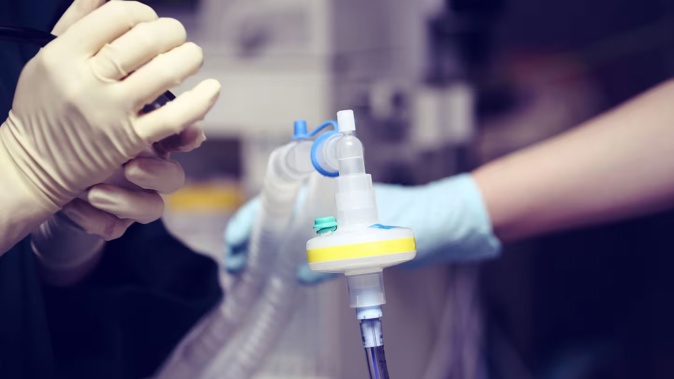

- An elderly woman died after a breathing tube was mistakenly inserted into her oesophagus during surgery.¶
- Deputy Health and Disability Commissioner Carolyn Cooper found Health NZ and a doctor breached the Code of Health and Disability Services Consumers’ Rights.¶
- The incident was described as a “perfect storm” of factors, including confirmation bias and systemic issues.¶
An elderly woman with breast cancer who went into surgery for a mastectomy died after a breathing tube was mistakenly inserted into her oesophagus.
Health New Zealand described the death as a “perfect storm”, as the woman had experienced difficulty with a breathing tube and surgery before.
One of the doctors said there was an element of confirmation bias in fixing the problem, as staff working on the woman assumed the complication was the same as she had previously experienced.
However, the breathing tube was actually in her food pipe.
According to a finding released today by Deputy Health and Disability Commissioner Carolyn Cooper, Health NZ and one of the doctors involved breached the Code of Health and Disability Services Consumers’ Rights.
According to that ruling, in which the names of the parties were redacted, the 73-year-old woman was scheduled for surgery at an Auckland hospital to remove a breast.
The woman was anaesthetised and an endotracheal (breathing) tube was put down her throat.
However, her condition deteriorated during surgery, and it was found the tube had been mistakenly placed in her oesophagus.
As a result, the woman suffered an unsurvivable brain injury and died before hospital staff working on her identify the problem.
One in a million
The lead doctor, referred to as Dr C in the decision, told the coroner after the woman’s death that she had suffered a recent bronchospasm, or narrowing of the airways, during a previous operation that caused the procedure to be abandoned.
This meant that when the woman began showing signs she couldn’t breathe, staff thought she was having another bronchospasm.
“We inevitably undertook [the woman’s] anaesthetic with a very strong expectation that bronchospasm might occur after intubation,” Dr C told the coroner.

Deputy Health and Disability Commissioner, Carolyn Cooper. Photo / Supplied
Another doctor told the Deputy Health and Disability Commissioner that when inserting a breathing tube, the view of the vocal cords can be partially obstructed by cartilage in the throat. As the oesophagus lies just behind the laryngeal opening, sometimes a tube can be inserted into the oesophagus instead of the trachea.
Do you have a justice story we should be covering?
As it’s not possible to verify the correct placement, there is a routine checklist to make sure the tube is in the trachea.
In this case, the woman’s stomach was rising, indicating she was able to breathe.
However, information on a digital monitor that formed part of the positive indicators of breathing was not showing.
At this point, one doctor used a stethoscope and said to the team; “I can hear breath sounds; there is bronchospasm”.
Despite this, she said she wanted to check the placement of the tube.
Another doctor told the commissioner that he was not happy with the situation at the time and felt something was wrong.
The woman’s condition continued to deteriorate, and hospital staff began chest compressions before an emergency bell was rung.
Dr C told the coroner that he considered removing the breathing tube but in a “highly stressful situation” with the woman’s history of bronchospasm, combined with a range of other medical factors, he didn’t.
“Obviously, with the benefit of hindsight, confirming tube position would have revealed the true nature of the problem sooner, and may have led to a better outcome,” he said.
‘Perfect storm’
Dr C said the event was caused by a very unfortunate confluence of multiple factors that created an extremely confusing crisis.
He said he had dealt with similar situations over the years that have always been diagnosed and rectified quickly and safely, but the key difference in this case was the “overwhelming expectation of bronchospasm”.
Health NZ echoed this statement and said a “perfect storm” of factors led to staff diagnosing the wrong problem, and that there was a “strong confirmation bias” in singling out bronchospasm as the root cause.

Health New Zealand Te Whatu Ora said that it was a systematic failing, rather than an individual staff member. Photo / 123rf
“It is clear that oesophageal intubation was considered and discounted given the information to hand,” Health NZ’s statement to the HDC said.
“It is easy in hindsight to criticise the failure to check the position of the endotracheal tube, but given the situation, it is not at all certain that other teams faced with similar circumstances would have done so.”
Health NZ told HDC that unrecognised oesophageal intubation is a very rare complication, considered to occur in about one in one million anaesthetic treatments.
While Health NZ accepted it had breached the Code, it maintained the complication was a team-based and system-based problem, rather than any singular staff member’s failing.
The woman’s family told the HDC, through an interpreter, that they didn’t believe Dr C was physically and mentally prepared for the surgery, and may have been rushing.
The family said Dr C continued to ignore obvious signs and concerns from other staff, and should have rechecked the tube placement.
Cognitive bias and serious omission
Cooper said there were individual clinician concerns and systemic issues at play.
“In my view the cognitive biases are an explanation or description of events and do not ameliorate Dr C’s responsibility to think critically when the medication that he administered did not result in any improvement, and to take appropriate actions at an earlier stage.”
“Notwithstanding that, Dr C was the consultant in charge of [the woman’s] care and, in my view, he should have thought critically about his diagnosis of bronchospasm.”
Cooper said Dr C failed to provide healthcare services to the woman with reasonable care and skill, and failed to rule out that the tube was in her oesophagus for 17 minutes, which she found to be a “serious error omission”.
Cooper also ordered that the report be sent to the Medical Council.
Health NZ told the HDC it had made multiple changes after a report into the woman’s death, including distributing the report, updating crisis checklists, and reviewing team training.
Health NZ has been approached for comment.
Jeremy Wilkinson is an Open Justice reporter based in Manawatū, covering courts and justice issues with an interest in tribunals. He has been a journalist for nearly a decade and has worked for NZME since 2022.

Take your Radio, Podcasts and Music with you









